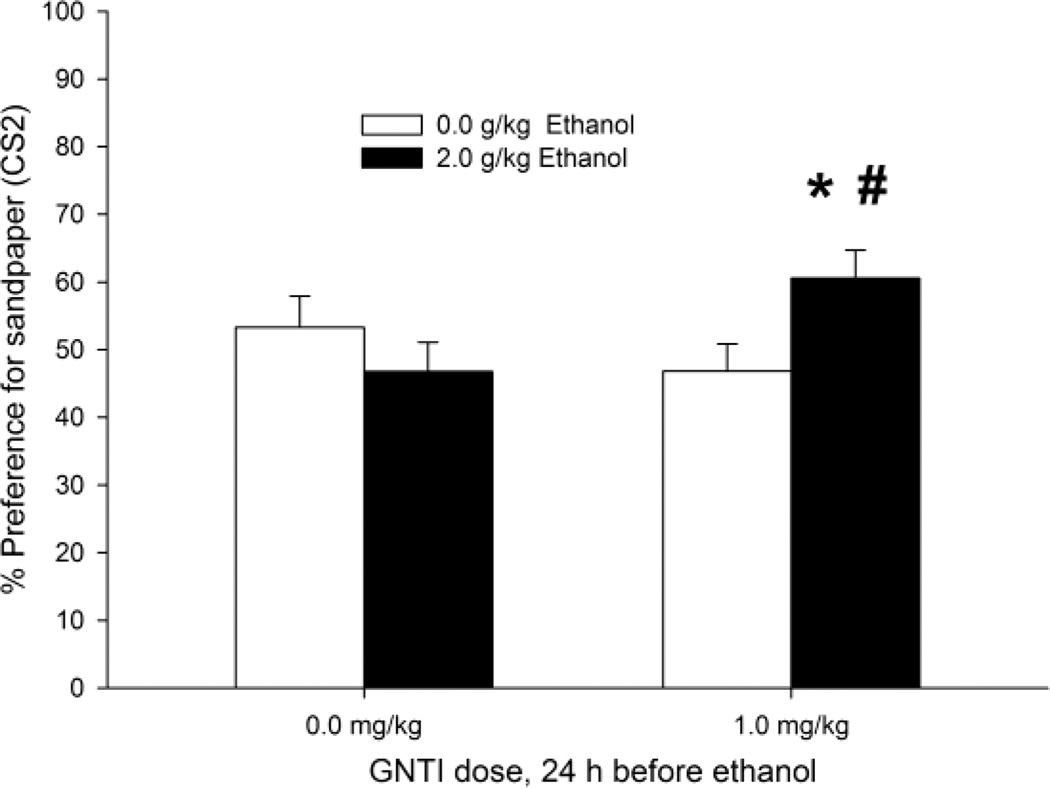Figure 2.
Ethanol-induced second-order conditioned preference in infant rats, expressed as the percent time spent in the CS2 compartment during the test as a function of GNTI and ethanol treatment. Pups received GNTI, a KOR antagonist (0.0 or 1.0 mg/kg, i.p.) followed 24 h later by ethanol administration (2.0 or 0.0 g/kg, i.g.). Conditioning involved stimulation with intraoral pulses of water (CS1) during ethanol post-intubation time 5–20 min. The next day, the animals were subjected to CS1–CS2 pairings and then tested for CS2 preference. The asterisks (*) indicate significant differences between the group treated with 2.0 g/kg ethanol and its corresponding 0.0 g/kg control (p < 0.05). The pound signs (#) indicate a significant difference between groups treated with 0.0 and 1.0 mg/kg ethanol (p < 0.05). Vertical bars indicate the SEM.

